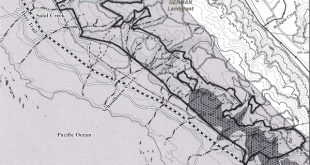by Kimberly Burr
October, 2013
Redwood Needles
Sierra Club Redwood Chapter newsletter
“Exporting Wine to China” was the title of a recent conference in Napa, one of many promoting sales of California wine to virtually unlimited markets. This is an indication that the making of local wines is being overtaken by big business with its characteristic disregard for the web of life. The wine industry is a growth sector that brings with it destruction of habitat and increasing demands on very limited water resources.
The environmental costs of grape growing threaten to overwhelm its economic benefit to the county. Local nonprofit groups compete for millions of dollars of public and private money to restore our watersheds and salmon habitat. At the same time, restoration efforts are swamped by business interests that are exploiting weak rules that allow the wine industry to be treated as if it consists of benign and diverse producers of healthy food. Small local winemakers that care more for the land will not benefit from the mega-expansion of industrial vineyards. It will mean less water, more competition, and the ruin of this bucolic region. Updating the Tree Protection Policy is Necessary
Now that more than 75% of Sonoma County valley cropland is used for growing grapes, the wine industry is turning its attention to forested land, which is poorly protected in the county code by the outdated Tree Protection Ordinance. The term protection is currently used very loosely in the ordinance. That is to say, certain types of trees are ‘protected’ unless someone wants to cut them down. This applies to even very large vineyard proposals which will require leveling of fields of oaks that have provided ground water benefits, habitat, cooling effects, and beauty for centuries. The county’s tree protection ordinance allows developers to either replace trees with small trees or to pay a fee. This was the best the County could do in 1985. These mitigations did not and do not apply to agriculture since agricultural projects (such as replacing a forest with a vineyard) do not have to mitigate at all.
Given the above facts, there must be a swift, full court press to update Sonoma County’s tree protection ordinance. This update must be based on science including the recognition of the important role trees play in the climate, water, and habitat. Sonoma County will always be a desirable place to live and do business. It does not need to rush to convert forest, woodlands, and watersheds in the service of an unrestrained industry. Reasonable Review of Highly Destructive Projects
Faced with the above realities, the public is attempting to mount an effort to protect more of the County’s trees and natural areas. Currently, large vineyards developments are not subject to the same environmental rules that apply to other large developments. Possible changes in public policy should include instituting environmental thresholds that will be triggered by larger developments and determine whether or not environmental review is necessary. Environmental review informs decision-makers and the public so that we can all understand potential impacts and properly avoid or mitigate them.
In the spirit of keeping up with development pressures, we are asking everyone to contact their Sonoma County Supervisor and urge them to update the Tree Protection Ordinance.
-KIMBERLY BURR, ENVIRONMENTAL LAWYER
October 2013, Redwood Needles
 Friends of Gualala River Protecting the Gualala River watershed and the species living within it
Friends of Gualala River Protecting the Gualala River watershed and the species living within it


